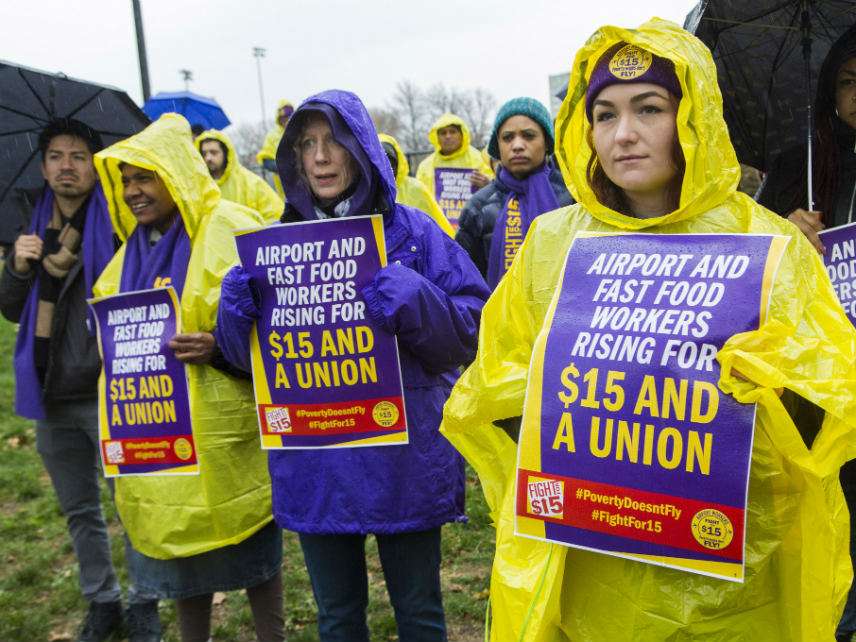Pew Map Shows One Reason a National $15 Minimum Wage Won't Work
The value of $15 varies greatly across the country and even within the same states.

Here's a thought: Maybe the federal government shouldn't be in the business of mandating a one-size-fits-all minimum wage.
That's the main takeaway from a Pew Research Center article published Wednesday. "The real value of a $15 minimum wage depends on where you live," the headline notes. The cost of living is much higher in some parts of the United States, such as New York or the San Francisco Bay Area, than it is in other, such as Beckley, West Virginia.
Pew used federal government data to calculate the real purchasing power of a $15/hour minimum wage in hundreds of urban areas:
These estimates are calculated by using data on "regional price parities," or RPPs, for the nation's 382 metropolitan statistical areas. The RPPs, developed by the federal Bureau of Economic Analysis, measure the difference in local price levels of goods and services across the country, relative to the overall national price level (set at 100).
The result was this handy map:
In the San Francisco Bay area, the real purchasing power of $15 is closer to $12. A $15/hour minimum wage would go the farthest in Beckley, where the purchasing power of $15 translates to $19.04.
In some places, raising the minimum wage to $15/hour means workers in low-skill jobs will be making the same money or close to it as trained professionals. Axios notes that in El Centro, California, the median wage for nursing assistants is $15.07. That money goes farther than it seems at first glance, since the purchasing power of $15 is about $16.80 in El Centro. But a $15/hour minimum wage means many nursing assistants will earn roughly the same as fast-food employees.
This isn't just a problem for a federal minimum wage—it's an issue for state governments too. California's minimum wage will reach $15/hour in 2022. This will have a drastically different effect on El Centro than it will on the San Jose metropolitan area, where the cost of living is 42.3 percent higher. Similarly in New York State, a statewide minimum wage of $15/hour (set to take effect over the next few years) will impact NYC residents much differently than workers in the Utica-Rome region. That's because the cost of living is 30.2 percent higher in New York City, according to Pew.
"Fight for $15" might be a catchy motto, but it doesn't take into account cost of living realities. This is just one reason why the federal government—and state and local governments too—should let the free market do its job.
While minimum wage hikes increase workers' hourly earnings, they also reduce the amount of work available. That's partly why, as Reason's Scott Shackford pointed out in December, the Employment Policy Institute predicted that California's $15/hour minimum wage could cost 400,000 jobs. In Seattle, workers' hours at low-wage jobs went down while the minimum wage went up, leading to a decrease in overall earnings.
Bonus link: Reason TV's Jim Epstein takes a look at how minimum wage increases in New York City have turned car wash workers "into black market lawbreakers":



Show Comments (101)